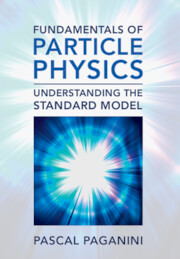Refine search
Actions for selected content:
6 results

Discovering Quarks
- Remembering Feynman, Gell-Mann, and Tollestrup
-
- Published online:
- 06 November 2025
- Print publication:
- 16 October 2025
6 - A Deeper Layer of Reality
-
- Book:
- Discovering Quarks
- Published online:
- 06 November 2025
- Print publication:
- 16 October 2025, pp 87-124
-
- Chapter
- Export citation
5 - Murray Gell-Mann
-
- Book:
- Discovering Quarks
- Published online:
- 06 November 2025
- Print publication:
- 16 October 2025, pp 66-86
-
- Chapter
- Export citation
2 - The Discovery of Quarks
-
- Book:
- Discovering Quarks
- Published online:
- 06 November 2025
- Print publication:
- 16 October 2025, pp 14-34
-
- Chapter
- Export citation
15 - One Generation of Leptons and Quarks
- from Part II - Construction of The Standard Model
-
- Book:
- Uncovering Quantum Field Theory and the Standard Model
- Published online:
- 06 February 2025
- Print publication:
- 02 January 2025, pp 330-355
-
- Chapter
- Export citation

Fundamentals of Particle Physics
- Understanding the Standard Model
-
- Published online:
- 31 August 2023
- Print publication:
- 14 September 2023
